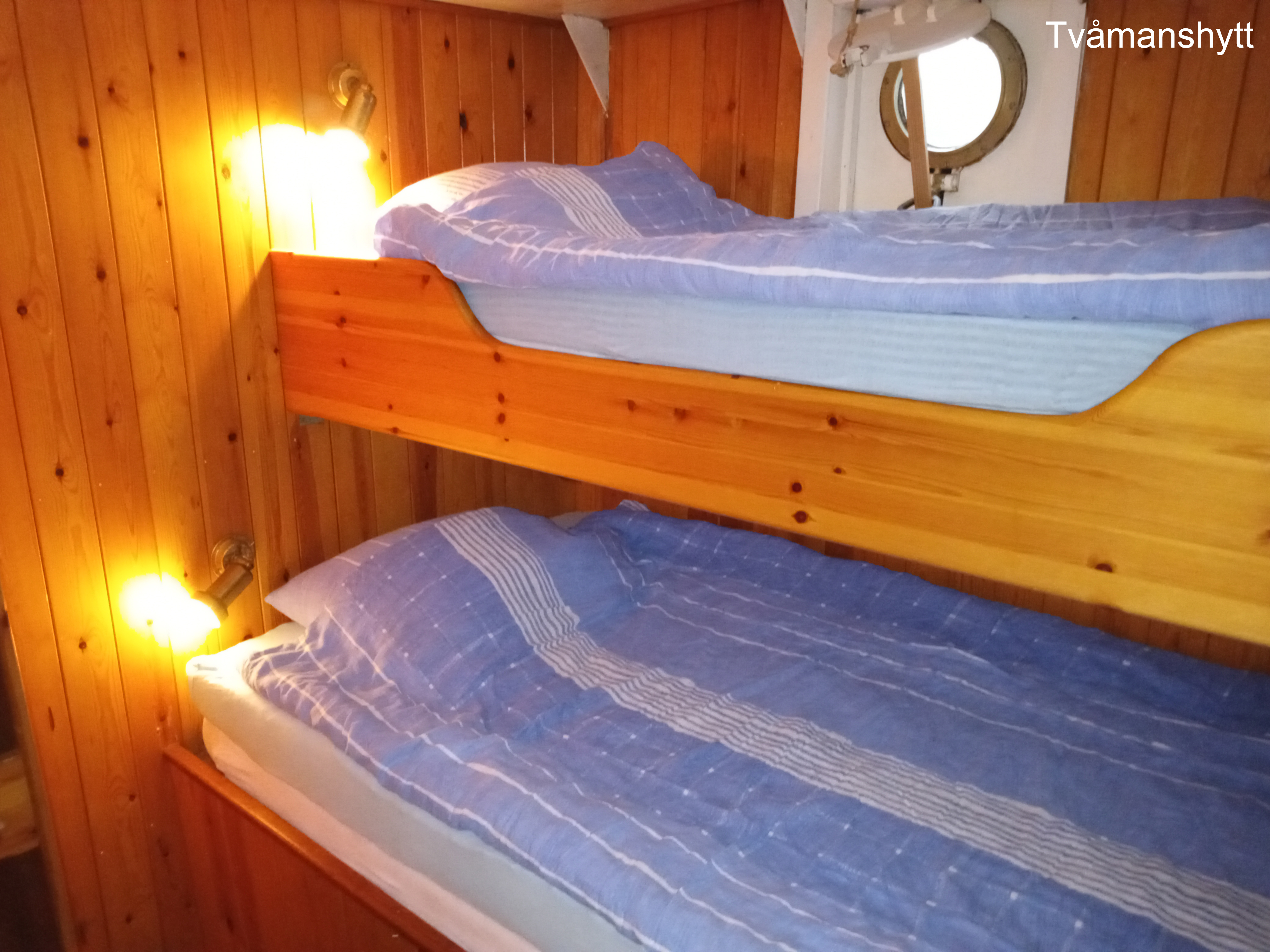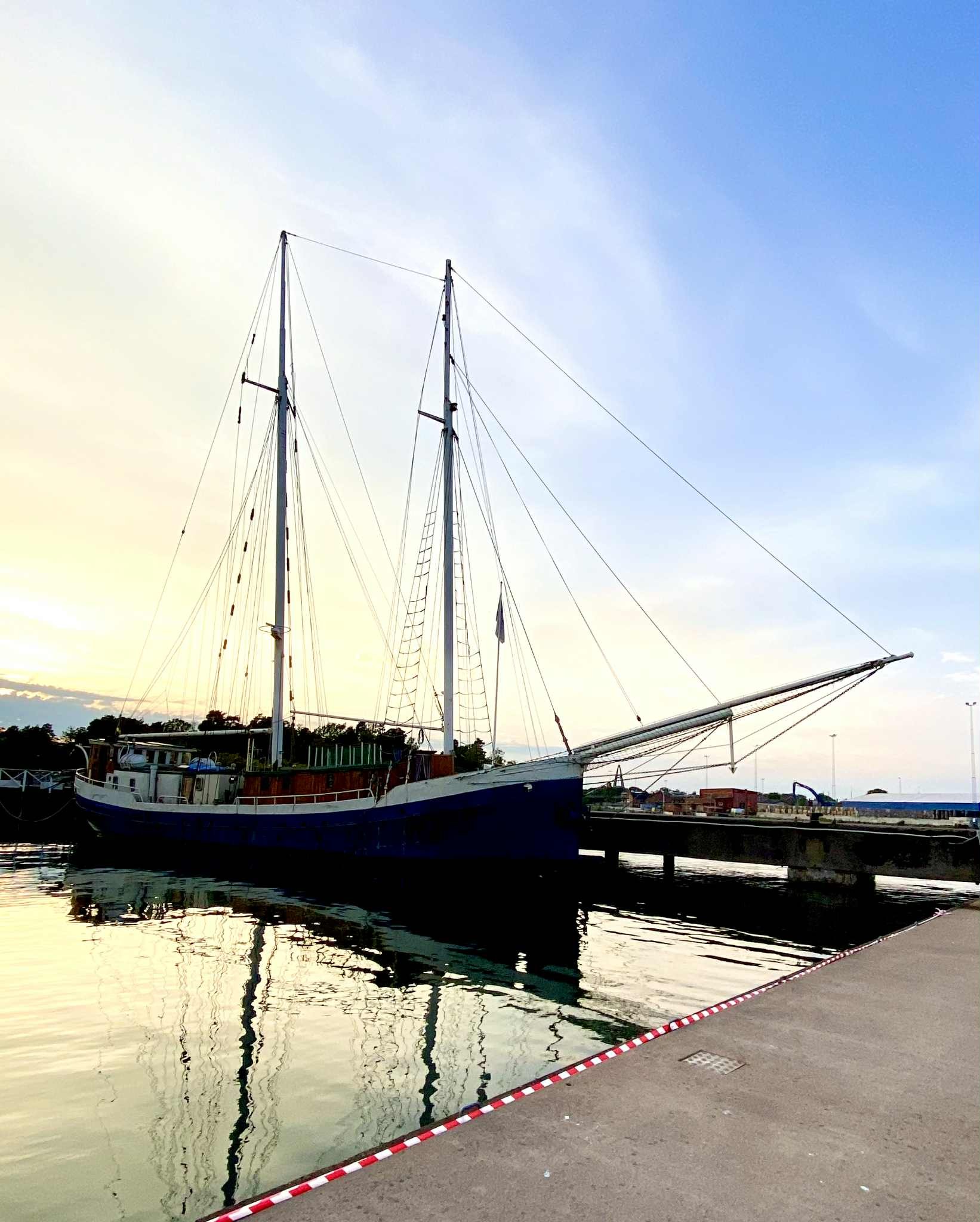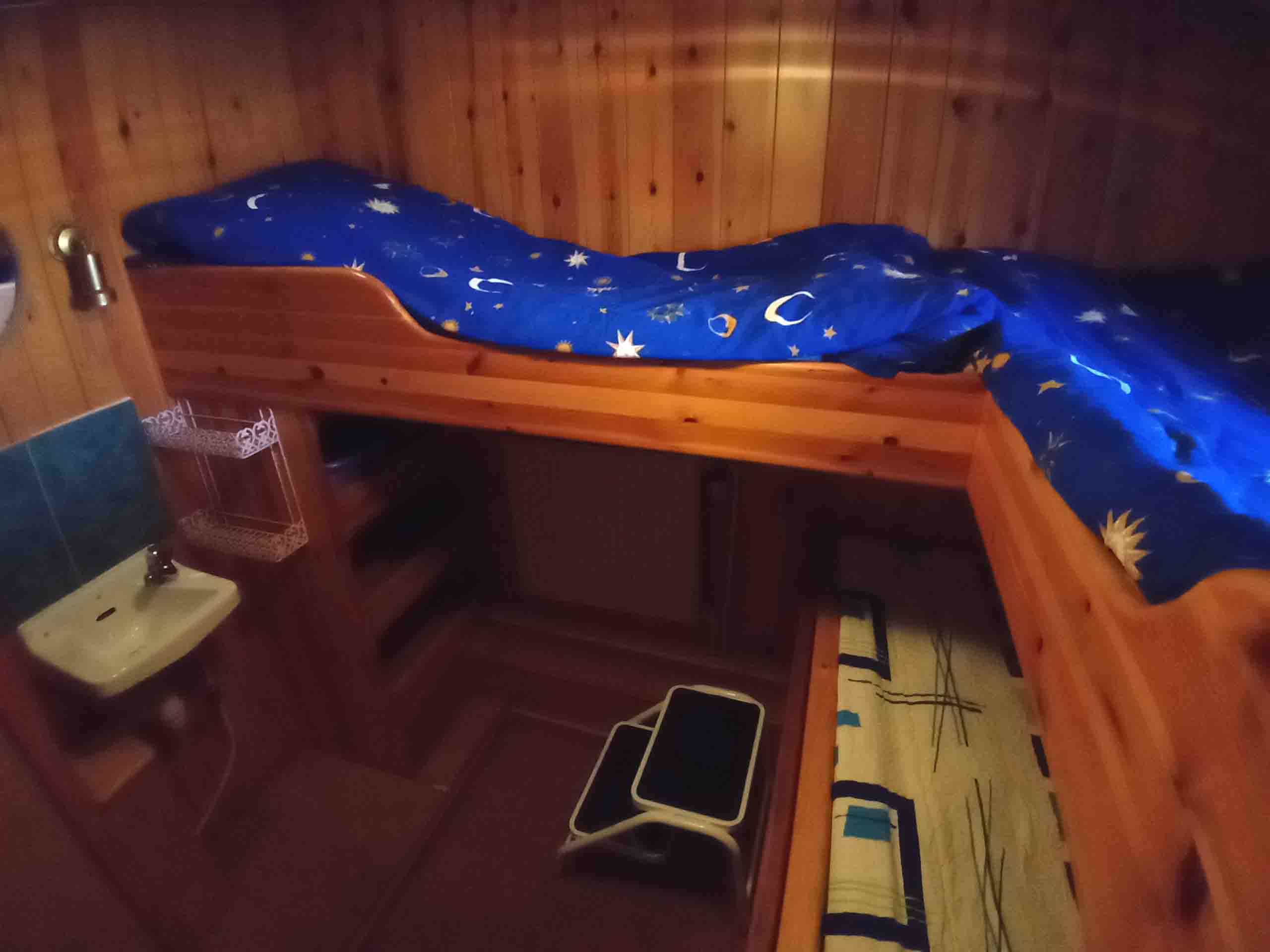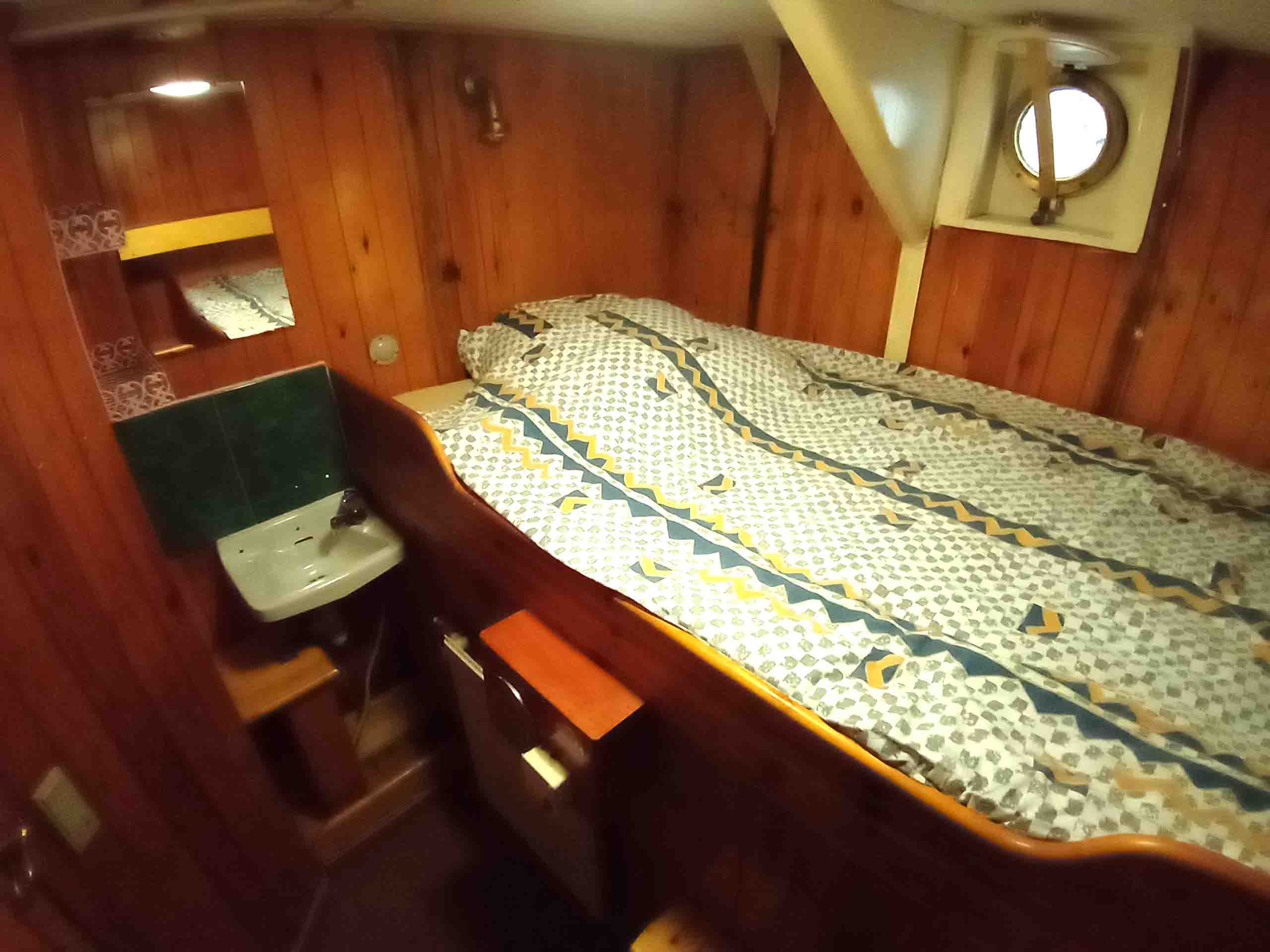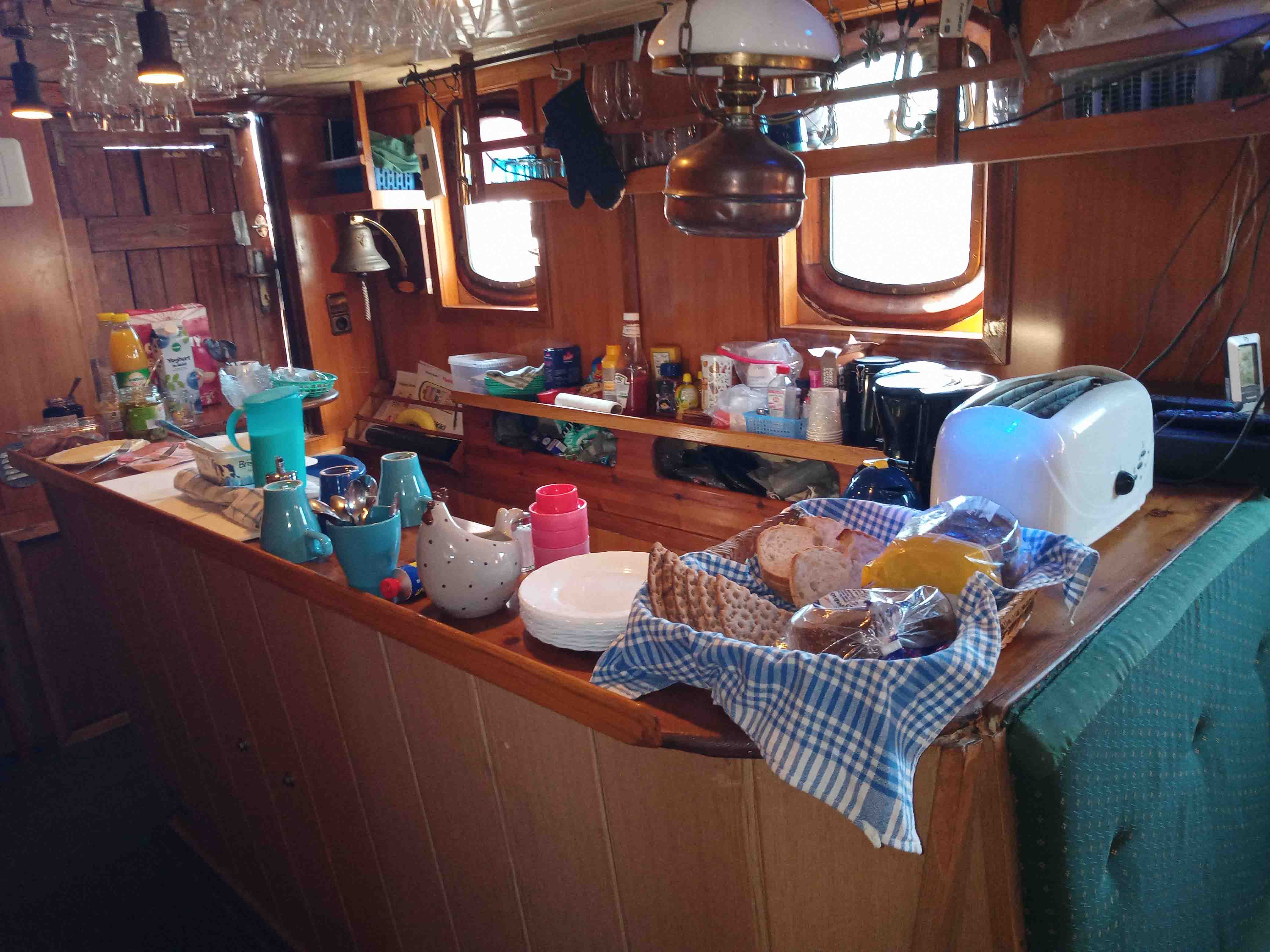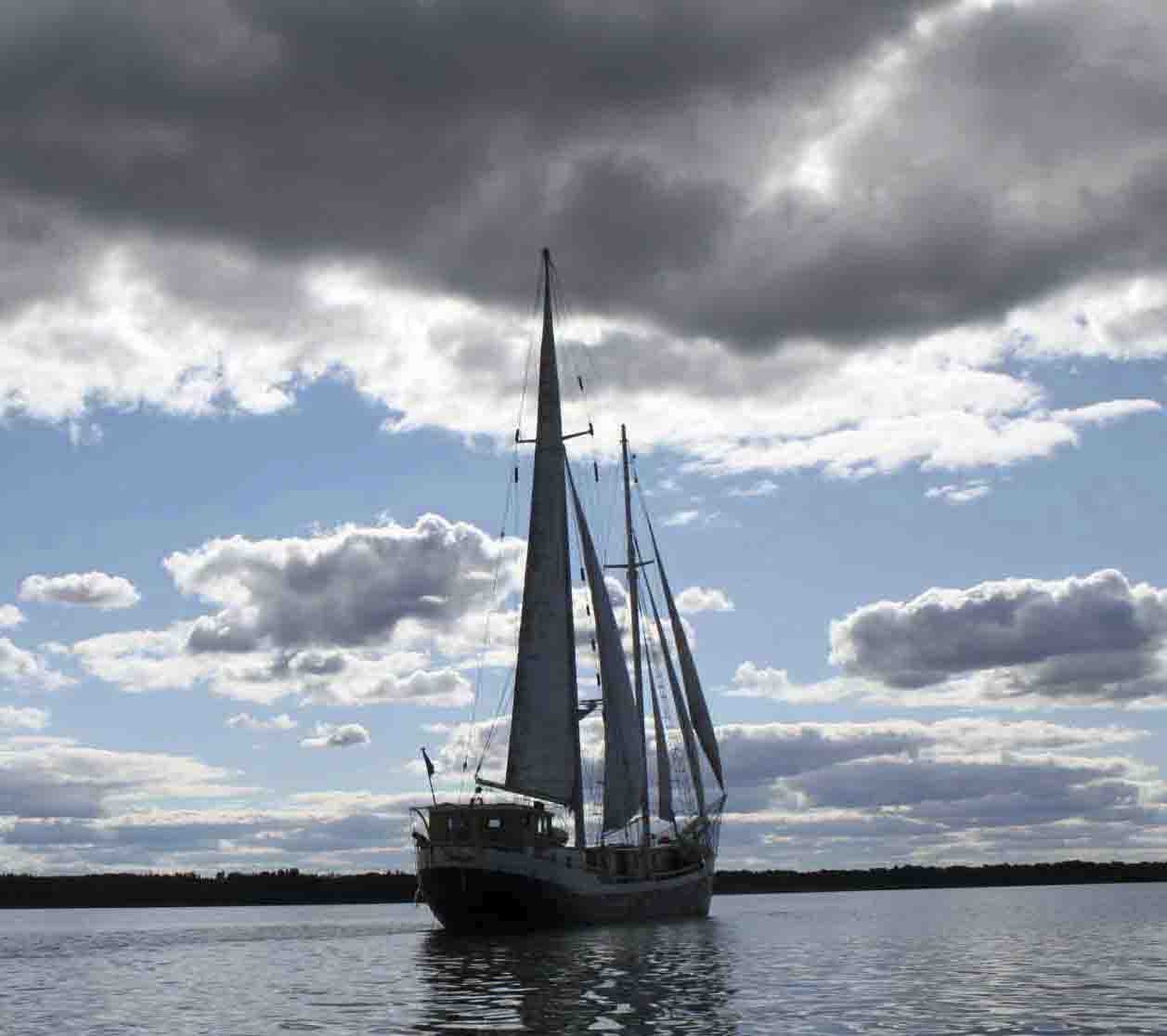The Ship’s Story
Libelle has lived many lives.
She was built in 1930 at the Cranz Neuenfelde shipyard in Kappeln, Germany, as a coastal trading vessel. Measuring 28 metres in length (plus an 11-metre bowsprit), she was likely equipped with a gaff rig and a modest auxiliary engine of just 30 horsepower. Her first name was Libelle – meaning “dragonfly” in Dutch – a fitting name for a ship with so much motion in her.
At one point she carried the name Prince Hamlet, but today she’s proudly Libelle once again and is officially registered in Sweden.
In 1943 – right in the middle of World War II – the ship was converted into a motor vessel. The rigging was removed and replaced with a powerful 130 hp M.A.K. diesel engine. A deckhouse galley and a wheelhouse were added. It’s a small miracle that she survived the war, but she did – and continued operating as a coastal freighter until the 1980s.
That’s when a Danish crew took over. They re-rigged her – this time with staysails – and began building the interior that still forms the heart of Libelle today. According to the ship’s log, she later sailed to both the West Indies and the Mediterranean, where she spent several years at sea.
In 1987, Tekla Küster took the helm. She completed the interior and had Libelle registered as a German traditional vessel, certified to carry up to 50 passengers. Her home port became Heiligenhafen, a small seaside town in northern Germany. In 1996, Tekla’s brother Horst Küster took over, finished the final interior work, and operated the ship until 2009. During his time, Libelle served as a sailing school for children and youth, and in winter, as a floating hostel for sea anglers visiting the coast.
And now?
Today, Libelle rests safely in Oxelösund’s guest harbour, lovingly converted into a hostel for those who appreciate places where every plank has a story to tell.
